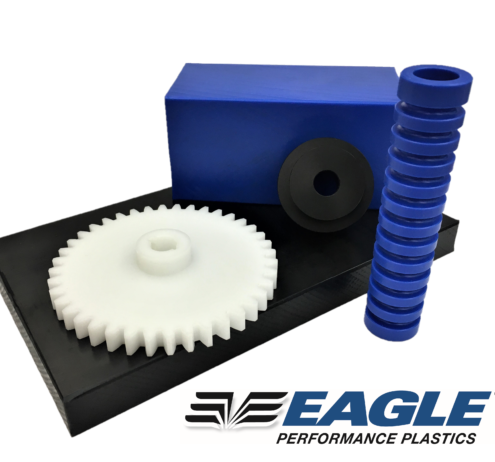PAI Carbon 30%

PAI Carbon 30% Overview
What is the Material: PAI 30% Carbon is an imidized amorphous material filled with carbon fibers.
Key Material Features: This material is beneficial in applications requiring reinforced structural properties, while maintaining the properties of other PAI materials including high strength, dimensional stability, diverse chemical resistance, and it maintains its properties at elevated temperatures.
Other Considerations: This material is attacked by hot water and steam. The carbon filler reinforces the structural properties, but it is not abrasive like glass filled can be.
Physical
| Property | Value | Typical ASTM Test |
|---|---|---|
| Chemical Designation | (PAI) Polyamide-imide | |
| Trade Names (®, ™) | Torlon, Tecapai CM XP730, Duratron T7130 | |
| Filler | 30% Carbon Filled | |
| Color | Black | |
| Density (g/cm^3) | 1.47 | D 792 |
Mechanical
| Property | Value | Typical ASTM Test |
|---|---|---|
| Modulus of Elasticity (Tensile Test) (psi) | 1200000 | D 638 |
| Tensile Strength at Yield (psi) | 12500 | D 638 |
| Tensile Strength at Break (psi) | 24000 | D 638 |
| Elongation at Break (%) | 4 | D 638 |
| Flexural Strength (psi) | 37000 | D 790 |
| Modulus of Elasticity (Flexural Test) (psi) | 1300000 | D 790 |
| Compression Strength: 10% Strain (psi) | 40000 | D 695 |
| Compression Strength: 1% Strain (psi) | 6500 | D 695 |
| Compression Modulus (psi) | 700000 | D 695 |
| Impact Strength (Izod) (ft-lbs/in) | 1.1 | D 256 |
| Hardness (D) | 94 | D 785 |
| Hardness (E) | 90 | |
| Coefficient of Friction (Kinetic, 40 psi, 50 fpm) | 0.15 | D 3702 |
| Coefficient of Friction (Static) | 0.13 | D 3702 |
| Wear (K) Factor (in^3-min/ft-lbs-hr) (Against Steel, 40 psi, 50 fpm) | 7.50E-9 | D 3702 |
Thermal
| Property | Value | Typical ASTM Test |
|---|---|---|
| Glass Transistion Temperature (°F) | 529 | D 3418 |
| Deflection Temperature (°F) (264 psi) | 526 | D 648 |
| Service Temperature Continuous (°F) | 500 | |
| Thermal Expansion (CLTE) (in/in/°F) | 1.62E-5 | D 696 |
| Thermal Conductivity (BTU-in/hr-ft^2-°F) | 3.60 |
Other
| Property | Value | Typical ASTM Test |
|---|---|---|
| Moisture Absorption (%) (24 Hours) | 0.3 | D 570 |
| Moisture Absorption (%) (Saturated) | 1.5 | D 570 |
| Flammability | V-0 |
The data stated are typical values intended for reference and comparison purposes only. The data should not be used as a basis for design specifications or quality control. The information is provided as a guide to the best of our knowledge and given without obligation or liability. Testing under individual application circumstances is recommended.
